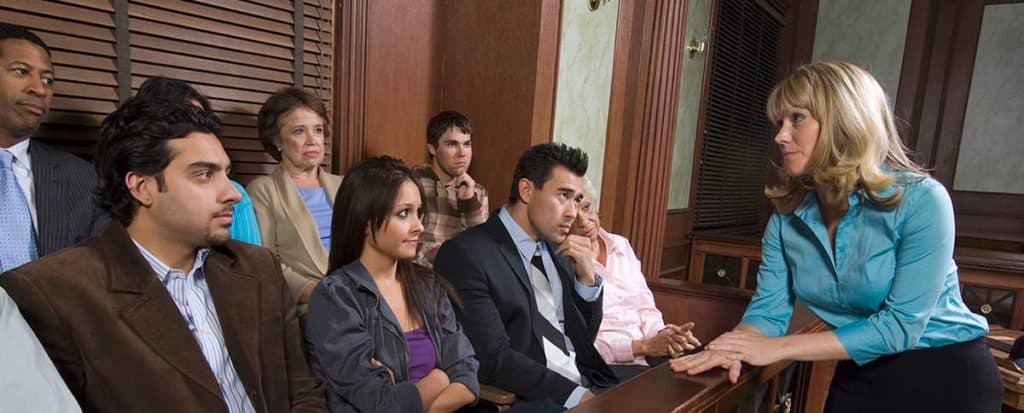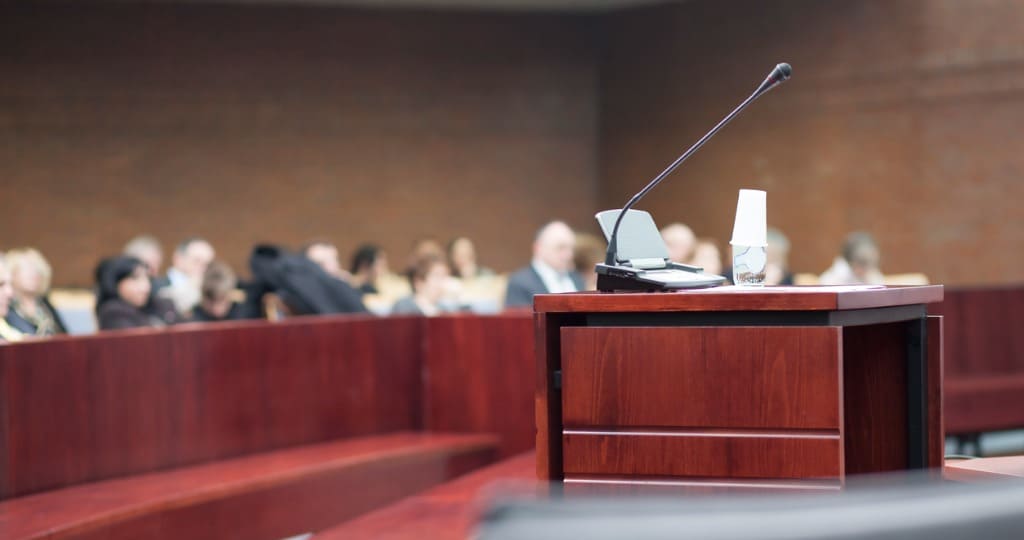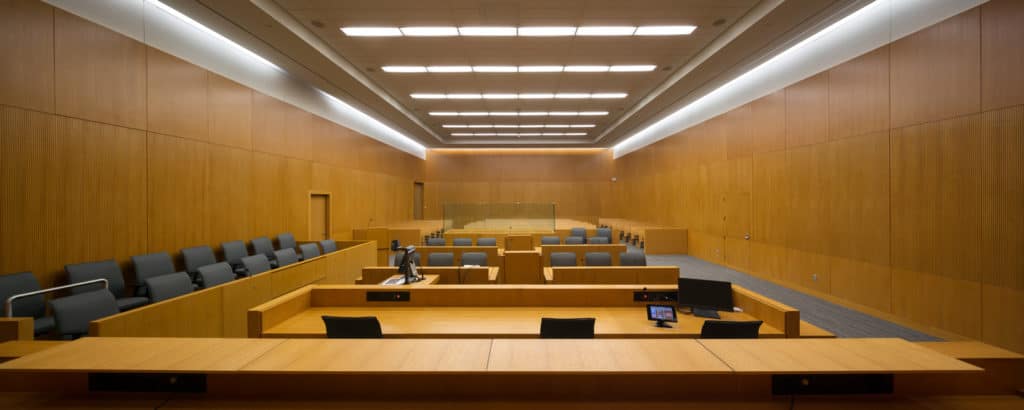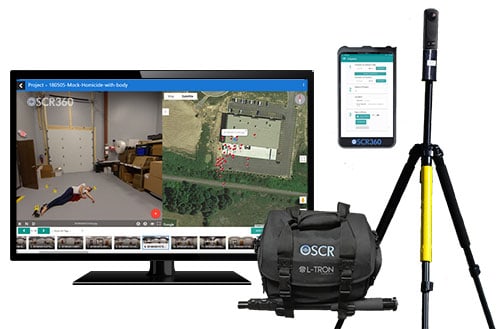Some of us dread the day that we are called to jury duty, but it is our civil right to report!
My recent experiences as a juror reminded me that the jury duty process offers a way for each of us to serve our greater community. I learned more about criminal proceedings in my local courthouse. I also enjoyed expanding my horizons in a new environment and with new experiences. I even discovered that the jury duty process is a little different from how it is portrayed in the media.
Discover more about my experience serving as a juror including: the jury duty process, juror selection, and what to expect when you are called to serve.

What qualifies a citizen for NYS jury duty?
In 2022, Monroe County, New York held local elections. Any U.S. citizen who exercises their right to vote in a NYS election, can be required to report to jury duty.
While voting this year, I filled out a new voter registration form since I had recently relocated from Erie County to Monroe County. Shortly thereafter, I received a Juror Questionnaire in the mail, meaning that I was being evaluated as a potential juror. After filling out the questionnaire, the NYS Jury Commissioner’s Office randomly selects jurors based on updated Voter Registration Forms, Juror Questionnaires, and DMV registrations/licenses.
Next step: getting summoned.
As it turns out, I was qualified. Soon enough, I received my jury summons. My summons specified a set date and time to call the Jury Commissioner’s Office, as well as the dates I could be required to report. I was also assigned a number that identified me in my district’s database.
Upon calling, I listened to a voicemail specifically recorded for myself and others who had been summoned. The recording stated the date, time, and location in which I needed to report. Since I had been selected, I was also required to answer some questions on my jury summons paperwork and bring it with me to the courthouse.
What to expect when reporting to the courthouse.
When the day arrived, I reported to the Monroe County Courthouse to begin the jury selection process. Much like an airport, people entering the courthouse must go through a security checkpoint, which was monitored by local law enforcement. I was asked to remove my coat, watch, belt, and anything else that could have set off the metal detectors.
As instructed in the Commissioner’s Office recording, I reported to the Central Jury Room and turned in my summons letter. The Jury Commissioner announced that each of us must fill out another questionnaire, this time with additional personal details. For example, I was asked about my occupation, the people I live with and their occupation(s), if I had ever been accused of a crime (or been the victim of one), my volunteer work and my hobbies. Following the collection of our questionnaires, the Commissioner broadcasted a video from the New York State Governor’s office about the rules of jury duty and how to remain unbiased throughout the process. We, as potential jurors, were reminded not to make decisions based on gender, race, sexuality, etc.
Next, the Jury Commissioner announced the juror groupings that were selected for each courtroom. There were about 60 of us called to the Supreme Court of Monroe County. We were required to wait in a separate room from the public. There, all of the selected jurors and I sat together in nervous anticipation of what was to come.

Jury selection
After about 20 minutes, a court officer arrived to escort us to the Judge’s courtroom. All 60 of us were seated in the spectator section. Seeing a courtroom for the first time was a bit daunting, but my background from working at L-Tron helped me to feel better prepared and gave me some idea of what was to come.
The Judge introduced himself and the court clerks, along with the defense attorney and the prosecutor from the District Attorney’s Office. Following introductions, the court clerks called jurors to the stand for questioning, 21 at a time. Both the prosecutor and defense attorney asked the potential jurors how we felt about specific laws related to the case we might hear. In our case, this included our feelings on the law of possession, NYS firearm laws, and the attorneys asked us additional information about the questionnaire we filled out. Since there were so many of us, three groupings were needed. I was in the final group.
In between each group, the jurors were asked to exit the courtroom so the lawyers could deliberate on which individuals they wanted to sit on the jury for this case. I was one of those called.
After swearing in, I was dismissed for the day, and expected to report back in the morning. In total, there were 12 jurors selected for this case, and one alternate.
The Trial
This trial lasted a total of 3 days. The first day was predominantly jury selection; the second day consisted of opening statements from both the defense and prosecution, and the prosecutor’s presentation of evidence; and the third day was the defendant’s testimony and jury deliberation.
Opening remarks and evidence presentation
The Monroe County Assistant District Attorney (ADA) on this case presented evidence using an overhead visualizer. His duty as the prosecutor was to bear the burden of proving to the jury, without reasonable doubt, that the defendant was guilty and that fact was legally established.
For this particular case, and individual was accused of Criminal Possession of a Weapon in the 2nd Degree. Perhaps the most interesting part of the case, for me, was the witness questioning.
First, the ADA questioned each witness about who they were and how they were tied to the case. Then, questioning continued about the location, evidence, arrest, and other pertinent details.
Witness #1: Special Task Force Officer from Monroe County Sheriff’s Office
- This witness was part of a surveillance team outside of the defendant’s home. This individual arrested the defendant.
- The ADA established the location of the arrest by displaying a printed photo of the area from Google Maps. The Officer marked circles to show where he was posted outside of the defendant’s house, and where the arrest was made.
- The ADA also showed photographs of the street signs where the arrest took place, and the defendant’s backpack on the ground at this location. He shared additional evidence photos connecting the items in the backpack to the location.
Witness #2: Firearms Technician from the Sheriff’s Office
- This witness confirmed the location on the map and confirmed that the photographs of the street signs and the backpack were documented by him – as per the Sheriff’s Office policies.
- The prosecutor pulled out the defendant’s backpack, and additional evidence, all of which this witness confirmed were collected on the day of the arrest.
Witness #3: Ballistics expert from the Monroe County Crime Lab
- This witness confirmed that the firearm was operable.
Testimony, law and deliberation
When the defendant took the stand, both the defense attorney and the prosecutor questioned him. After questioning, the Judge again read the charge on the defendant: Criminal Possession of a Weapon in the 2nd Degree. The defendant pleaded not-guilty.
The Judge explained to the jury that this meant that the People of New York State had charged the defendant with a violation of State Penal Law, in that he knowingly possessed a loaded, operable firearm, with intent to use it unlawfully against another. We, the Jury, were tasked with unanimously deciding if the prosecution had proven, without reasonable doubt, that the defendant was guilty.
We deliberated on the case in the jury room for about two hours and unanimously determined that the defendant was guilty.

My Reflections
The jury duty process was exciting, and not exactly what I had expected. At first, I had been apprehensive about all of the unknowns when I received my summons. I was also concerned about my time away from work, but, as I should have expected, L-Tron was very supportive. In fact, my co-workers were all curious to hear about the case and my experiences once the trial had concluded.
As far as the trial itself, I found the review of the physical evidence to be the most powerful. On the flip side, I had a hard time understanding the location of events and where the officers were posted, even with the supporting photographs. Though the ADA was a well-prepared and effective prosecutor, it was difficult for me to follow along as the attorney walked back and forth from his table to show us each individual photo.

In my opinion, the prosecution could have effectively streamlined their presentation and provided additional context to the case, using technology like OSCR360. With OSCR, the jury could have been walked through the crime scene, stopping at each relevant “Point of Interest,” or “POI,” to seamlessly display and relate the photographic evidence found to each location.
Would I serve on jury duty again? Absolutely! I feel proud to have served and played my part in supporting the criminal justice system.